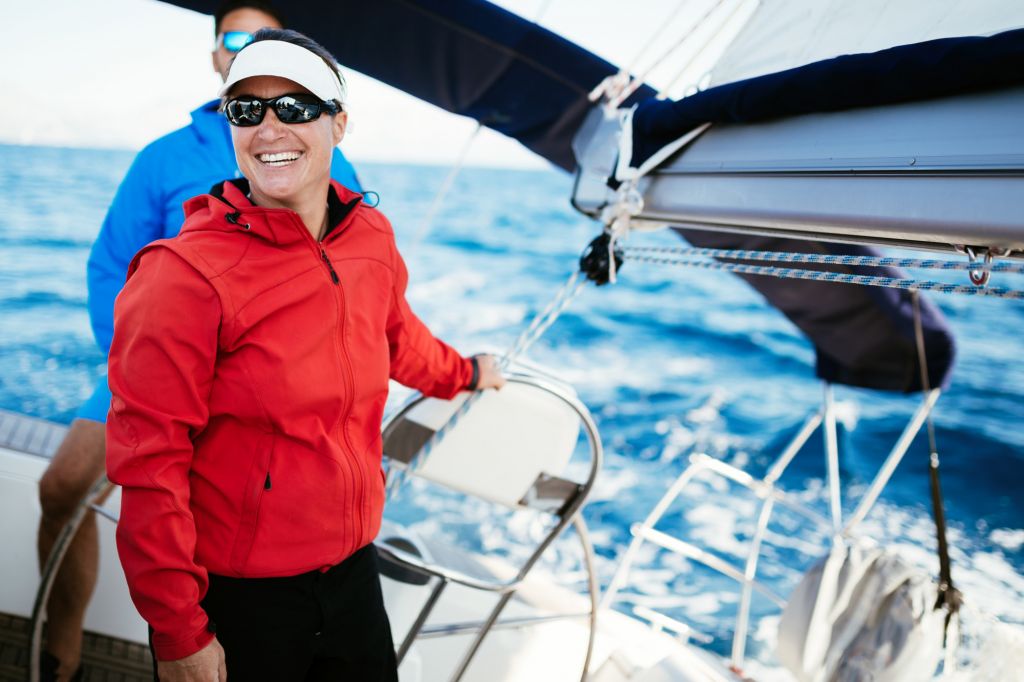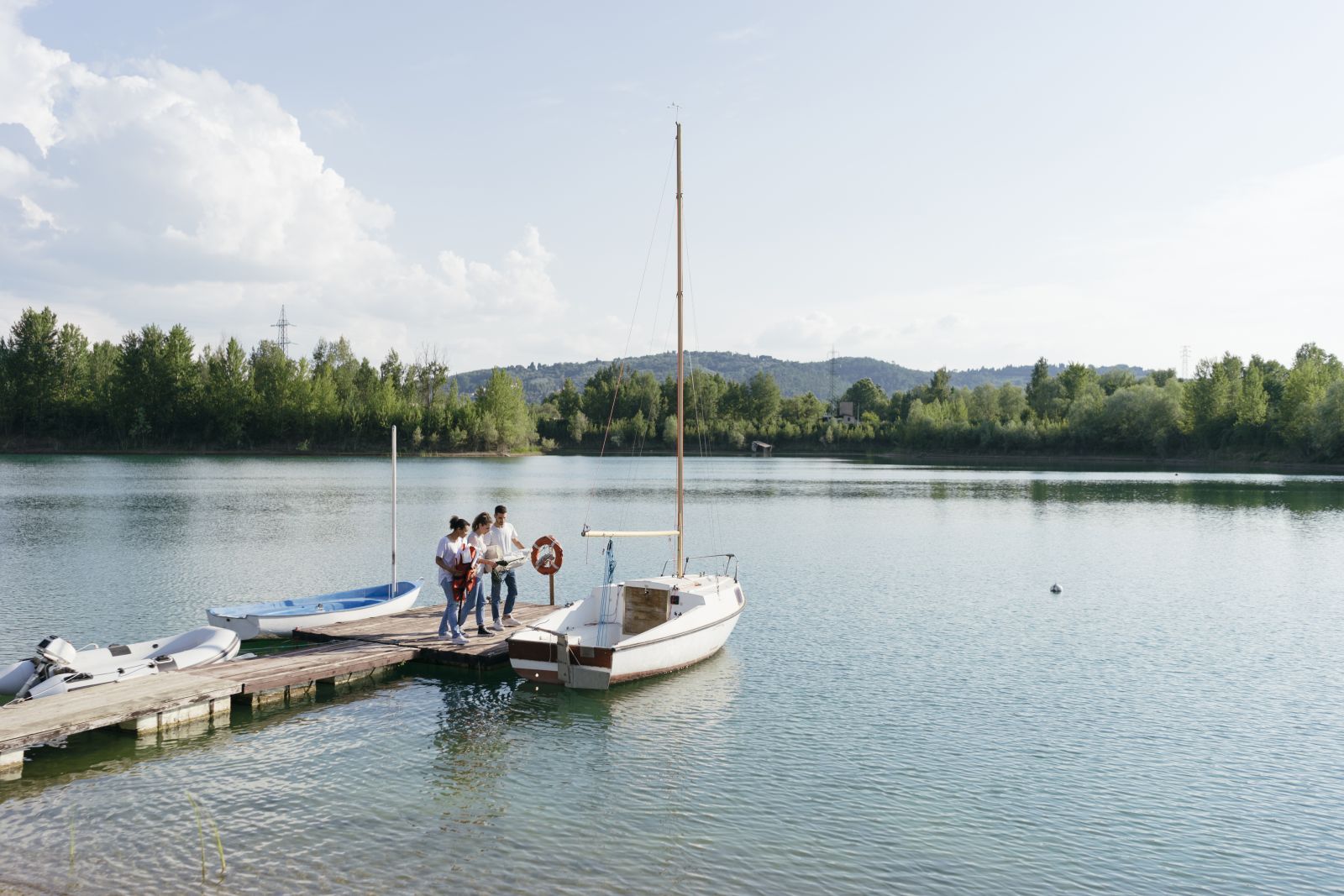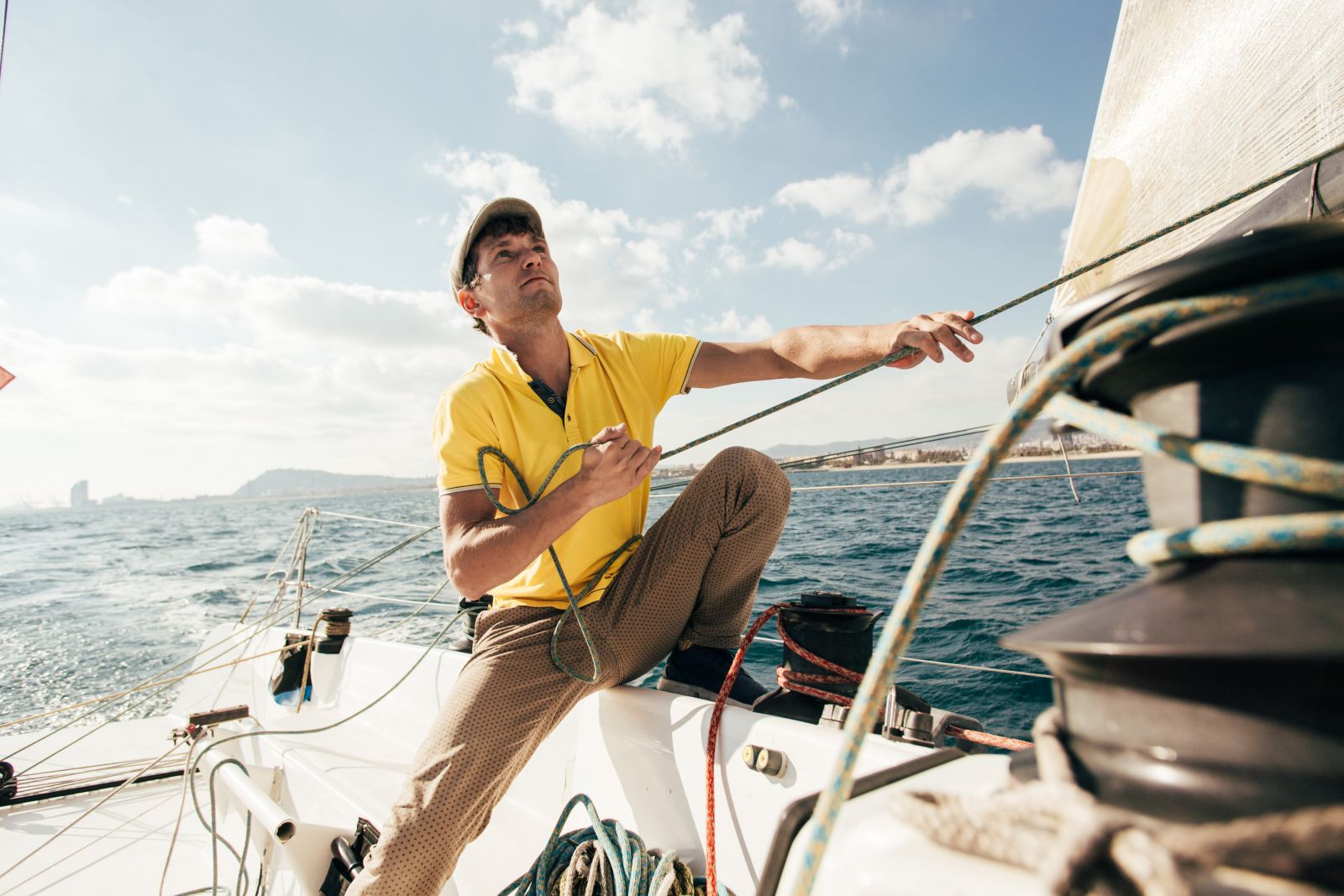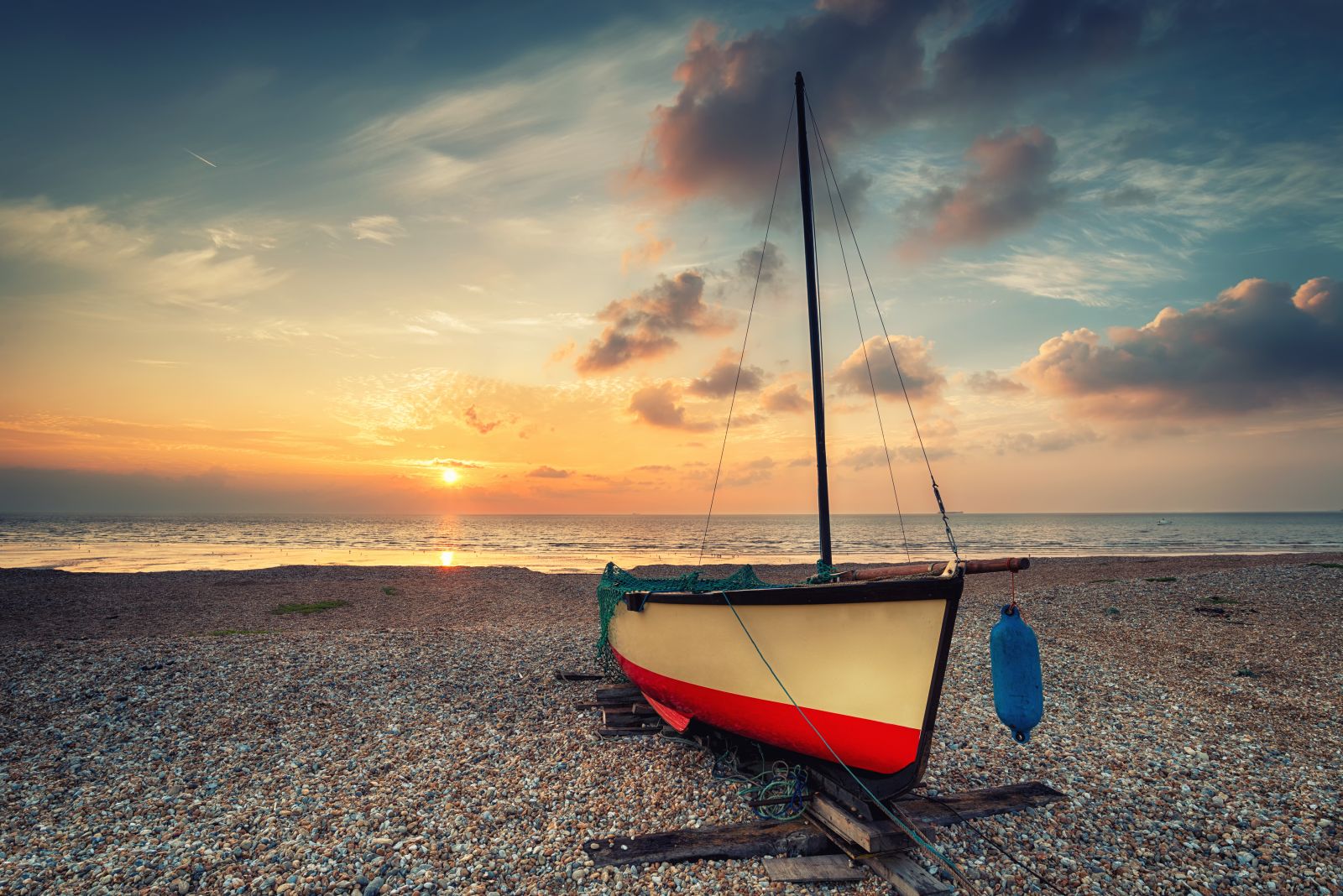10 Insider Tips to Learn to Sail Faster and Save Money
Whether your dream is to sell it all and sail off into the sunset or just get away for a weekend with the family, if you want to do it on a sailboat you’ve got to learn to sail. Like playing chess, you can learn the basic moves in a short while, but to sail well takes time. And it will cost you some money. You can take a lot of lessons, sure, but what if your budget is limited and you want to learn now?
The top three tips to learn to sail quickly are: sail, sail, and sail. There is no substitute for time on the water. You can also learn a lot off the water for less than in person instructions, but how can you do this and get on the water for less?

Top 10 money-saving tips for learning to sail quickly:
- Get on a Race Boat
- Join a Community Sailing Center
- Offer to Help Shorthanded Boat Owners
- Get an Old Beater Dinghy
- Join a Small or "Paper" Yacht Club to Make Connections
- Books & Magazines (Get 'em used)
- Use Online Courses, Websites, and Apps
- Play Games and Simulations
- Use Videos: DVD and Online
- Roam Boat Show Seminars
Don't fear, we can get you some wheel time, some off the water instruction, and save you a little scratch at the same time.
There are two general ways to go about it, and we have included money-saving tips for both of them:
- Getting on the water cheaply
- Learning ashore on the cheap
Ways to Save Money - Getting on the Water
I can not reiterate that there is no substitute for time on the water for learning to sail. Later on we'll talk about games, videos, books and online courses. But none of those things will teach you until you've got a hand on the tiller or on a sheet. It's the real world practice that pulls the theory you learn off the water together.
Any sailing - from dinghy sailing, Tuesday night racing, day sails, weekending or long trips - any sailing is a learning experience. Even if you're just riding the rail on a race boat in the slow fleet, you’ll learn something about how a boat works, how the wind feels, and how to sail better.

Get on a Race Boat
Finding a regular spot on a weekly beer can racing boat is one of the best ways for a beginning sailor to ratchet up their skills. You sail every week, everyone is trying to make the boat go faster than the other guy, you're surrounded by a few people who know how to sail, and you will sail in a variety of conditions from light air drifters to more breeze than you may prefer on your own.
So how do you do it? Basically, you ask around. Put the word out you are looking to crew. Find out what the local racing scene looks like - what nights do people race? What types of boats? Usually races are run by a yacht club or committee. That organization is a good place to put your name out there. There will often be message boards (virtual or literal cork boards) looking for crew in these places, and you can post a message of your own advertising your availability. Be honest about your skills, it's okay to be a beginner.
They break most racing into "fleets" with the most intense racers on the bigger and better prepared boats. You, as a relative (or complete) newbie, aren't likely to get a spot on one of the more competitive boats. However, there will be many spots in the slower and more relaxed fleets where skippers struggle to get enough people to race every week. If you are reliable, you will get invited to race on these boats, even if you lack skills. Start with the non-spinnaker jib and main racing fleets, they have the most trouble attracting regular crew. As you build skills, you may get invites to faster and more competitive boats.
But you have to ask - at the yacht club, on the docks, or ask other sailing friends. Almost every sailor in the fleet knows a boat that could use some help.
What you need: You should have non-marking deck shoes and appropriate clothes. You may want your own PFD and foul weather gear if you get a regular spot, and sailing gloves if you haul a lot of lines.
Costs: Once you sail regularly, a little on optional gear and your share of snacks and drinks.

Join a Community Sailing Center
Community Sailing Centers are not-for-profit organizations focused on developing the sailing community. They offer reasonably priced training, but most of them also have boats you can use for little or no additional charge. The cost to join a community sailing center may run from nominal (around $50) to $500-$600. The more expensive centers are larger, have a wide variety of boats you can use, and have more training staff and a larger program.
Though the lessons are good and reasonably priced, the real value for you is once you've passed your checkout sail and can take a boat on your own. Once you've mastered the basics and can safely operate a boat, your only limit on tiller time is how much you can spend.
As examples, the U.S. Sailing Center in Martin County, FL , offers unlimited use of their fleet of boats ranging from Optimist dinghies, RS Fevas, and Flying Scots (a 19 foot day sailor). They sponsor lessons, junior sailing, racing, and family sailing. The family rate is only a $120 more than the individual. The Community Boating Center in Providence, RI offers adult lessons and has daily times for free sailing.
Many waterfront communities have these types of organizations, but you may have to ask around for your town if you can't find them with Google. There's an upfront cost to join, but they're a great place to take introductory lessons until you qualify to take a boat on your own.
Costs: Membership dues, a few lessons if you can't qualify to take a boat out, and you probably want your own PFD.

Offer to Help Shorthanded Boat Owners
Shortly after we bought our second boat, we also had our second child. We weren't very experienced, and we found ourselves with a toddler, a newborn, and ten more feet of boat than we were used to. We needed help, and it thrilled us any time we could get an extra pair of hands out for a day or a weekend.
Single boat owners, parents with young kids, couples with only one partner who sails - all these are opportunities for you to get time on the water. You may also find opportunities to help deliver a boat or move it, whether it's a race boat headed to an out-of-town regatta or a cruising boat coming back from an extended vacation.
Like racing, this is something you will have to do a little leg work to find. If you are racing at a club, you can put the word out you're open to crewing for day sails or weekend trips. Do some networking and talking, and you can put signs up on bulletin and notice boards at clubs and marinas.
Cost: Nominal; you should bring food and drinks and have your own PFD.

Get an Old Beater Dinghy
There is a large market of older, less shiny dinghies languishing in backyards and garages near any sailing venue. When we bought my son a shiny new Laser for junior sailing and racing, I liked his so much I found a thirty-year-old boat for myself and joined the Thursday night Laser fleet at our club. It was a blast, and I learned a lot. I paid $1,200 for it and sold it for $1,000 a couple of years later.
You can find a serviceable sailing dinghy for under $1,000 (my son found a $400 Laser he sailed for a summer), and you can find a nice one for under $2,000. Unless you damage it or put on a lot of wear and tear, if you sell it in a year or three you will get most of that back. And you've got a boat you can take out any time.
One advantage of a dinghy over a keelboat is you can car-top it to the water and keep it in the garage or backyard if you aren't some place you can store it cheaply. Dinghy storage at local sailing centers and clubs is often very reasonable. But it gets you away from all the costs of docking and storage of a bigger boat while getting you on the water.
Dinghies can be fun, but they are also quick teachers, much more responsive than keel boats, and will help you get a feel for good sailing faster. Feedback for bad sailing is often immediate, wet, and refreshing on a hot summer day. If you find a dinghy like a Laser with a local fleet, you can even join the racing. Don’t worry about being terrible; everyone was a beginner once and you will get help and encouragement from the old hands.
Lasers and Sunfish are some of the best to learn on and only need one person. Larger sloop rigged boats with two sails are also good, though you may need a second person with you.
Costs: You have to buy the boat up front and fix what breaks, but the net when you sell it will be a few hundred dollars. You will need your own PFD, and if you want to sail in cooler water, you will want a wetsuit.
Join a Small or "Paper" Yacht Club to Make Connections
Some clubs have initiation fees, nice buildings, docks, special events, a pleasant bar with cheap drinks for members, and even nice marina facilities. They hold racing, but will invite non-member boats to compete. These can be expensive to join and have high annual dues, and if you're looking to save a buck, you'll only visit these as a guest.
But there are yacht clubs out there with no buildings and minimal ceremonies, or which meet in borrowed space or have shared clubhouse arrangements. Their formal meetings may be in a restaurant or bar once a year to talk about business. They still sponsor racing, club cruises and other social events but they will be very low key and very low cost to join - maybe as little as $50 a year. And some clubs have discounted "social" memberships for those who don't own boats.
Membership in a small club will put you on the mailing list for all the club events like racing or cruises. As a member, it also plugs you into a network of boat owners who will always need crew and people to help. By volunteering for club functions or helping with race committee, you will meet more boat owners and increase your network to get you on a race boat or invited out to sail.
Ways to Save Money - Learning off the Water
While there are limits to how much you can learn outside a boat, there is still plenty of theory to sailing that you can learn if you can't get on the water.

Books & Magazines (Get 'em used)
Books and magazines were my go-to learning how to sail. There are tons of Learn to Sail books out there, and some massive tomes like Chapman Piloting & Seamanship and The Annapolis Book of Seamanship which cover almost every topic there is to know about yachting and sailing. And there are many print magazines out there with tips on everything from sail trim to heavy weather sailing.
The good news is there are lots of books, and if you look around, you can pick up older editions or issues for dirt cheap or free. A book like Chapman's Piloting gets updates (the current edition is the 68th), but the 67th edition and the 66th edition are not that far out of date and you may find them at a used book store, flea market, or in a yacht club library to borrow.
Most sailors get at least one sailing magazine; many have several subscriptions. After a few years, we had stacks and stacks of them stored in closets. Ask around, you may do someone a favor taking a two-foot stack of old Sail and Sailing World magazines off their hands. Like the sailing books, most of the information is still useful and current, even if the magazines are several years old.
Cost: Free, or low cost for used books.
Use Online Courses, Websites, and Apps
Quiet! Don't tell folks that own Improve Sailing, but there are LOTS of websites (including this one!) that offer great information to help your learning. You can find everything from boater safety courses to ship light identification drills on websites and apps for your phone or tablet.
One of the best online courses is NauticEd. I've reviewed it in detail, comparing it to my own sailing experience. You can read all about NauticEd's pros and cons here.
You can start here on Improve Sailing, of course, but there are many other places the internet can take you for how-to-sail instruction, including:
- The American Sailing Association
- Cruising World Magazine's "How To" Articles
- The "for Dummies" book brand has some free content
- Udemy has Online Courses (Paid but not too expensive)
- NauticEd Courses (Two free then Paid)
- Offshore Sailing School/BoatUS (Paid)
- U.S. Sailing Basic Keelboat (Introduction is free)
Cost: Many free, though there may be sites and courses you want to pay for.
Play Games and Simulations
Sailing simulators have come a long way, and there are some good-quality ones that offer realistic sailing. You won't quite get the feel of a tiller or wheel in your hand, but you will get a feel for how a boat sails. Early on when I was learning to race, I found one virtual racing site to be a great tutor on the racing rules and sailing tactics against other sailors.
To be sure, there are some silly ones. But for the cost of a PC game, you can get a realistic experience you may take something of value from.
Cost: A video game costs from $25 - $65, though you can catch promotions. If you add any Sail Simulators to your Wishlist on a service like Steam, you will get notifications if they go on sale.
Use Videos: DVD and Online
The internet is flooded with videos about sailing. There are many free instruction videos on all basic aspects of sailing on YouTube and Vimeo. There are instructional DVDs that can teach you, but they are harder to find second hand. But many are worth buying new from the source if they cover a topic you need.
One word on free sailing videos - be careful of the quality of the source. Some sailing channels are fun and inspirational, but some are also run by relatively new sailors who may not be dispensing all the best advice. So take some care, and make sure you can separate aspirational lifestyle videos from good, solid instruction by experienced sailors.
Cost: Free (mostly)
Roam Boat Show Seminars
Boat shows are fun, and you can pick up some excellent information and tips just walking around and talking to people. There is often a sailing school or community sailing program with a booth, and you may get a promotional special or learn about cheap lessons.
But most boat shows also have a seminar tent, and you may find several interesting, free topics for learning sailors. The Annapolis Boat Show offers free seminars with subjects like "Docking & Line Handling" and "Night Navigation." Many shows will also have more in depth paid seminars and classes which may be worth your time.
Cost: Boat show admission (usually $15-$25 per day), plus transport and parking if you have to travel. Special seminars usually include show admission in the tuition cost.
Did you find the answer to your specific question?
👍 1 👎 0




Leave a comment